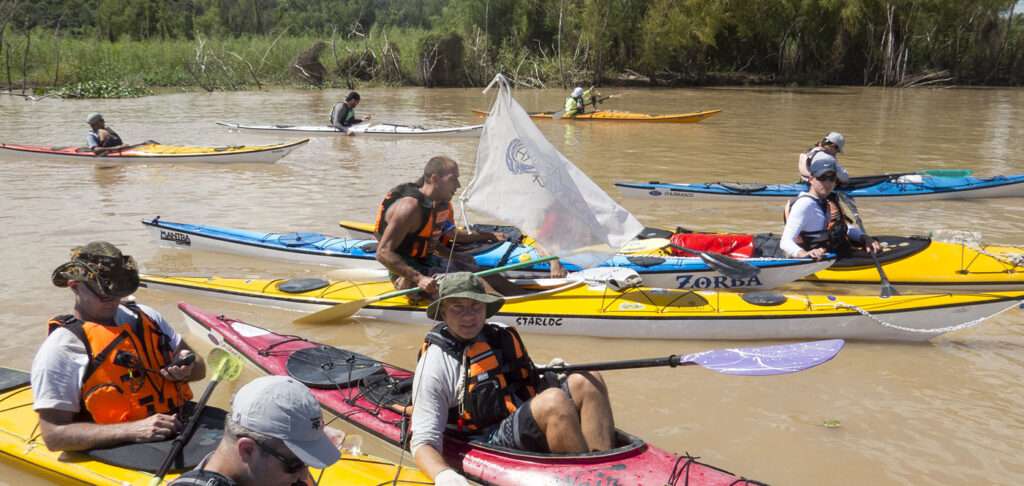First check the beach for rips. Rips are currents running out through the surf from the beach. Water pushed to the beach as “soup” on the faces of broken waves forms these rips as it escapes from shore. From a high viewpoint you can identify rips as breaks in the lines of regular surf, usually defined by erratic pyramidal waves and by visible current. If you walk along the water’s edge, you’ll see water flowing along the beach into each rip from either side, so you can pinpoint the rips by observing the direction of the shore flow. If you launch in a rip, you’ll have an easier ride out through the surf because waves break less powerfully in a rip, and the current will help you.
Next, watch for “sets” and “lulls.” Sets occur when swell patterns approaching a beach at different speeds combine to produce a series of larger waves. Lulls occur when two wave patterns are out of synchronization and waves from one pattern fill the troughs of the other, creating a calmer period. Usually, sets alternate with lulls, but the pattern is complex, and you’ll have to watch for some time to get a sense of what to expect. You should launch when a set is ending and a lull is starting, but if you are already on your way out through the surf when another set arrives, hold your position until it has passed before pushing farther out.
It is easier to paddle through the smaller waves during a lull, but a rip will also be at its most powerful immediately following a set.
Paddle quickly through the surf, pushing hard through soup. With experience, you will be able to dodge between some of the breaks by watching where the waves are steepest and will break soonest. Plant your paddle and power yourself forward through the waves; if you don’t plant your paddle, the waves will likely stop you and push you back. Once clear of the surf line, remember that when a set approaches, the waves steepen farther from shore than during a lull. Be careful not to stop too soon, or you may find yourself within the break-line of the next set.
A Controlled Surf Landing
Riding a wave to shore is sometimes an option if you are skilled at wave riding, but a controlled surf landing is essential whenever you approach a beach where there are other water-users such as swimmers, or when you approach an unknown beach.
The first rule here is to watch the direction of the waves. Surf beaches often have an easier end where the waves are smaller, typically the upwind end, or the end most sheltered from the swell direction. Choose the easy end! Enter the surf zone during a lull to avoid the biggest waves completely. Paddle as fast as you can, while watching behind for oncoming waves.
Instead of surfing forward on a wave, reverse so it does not pick you up, and then chase it toward shore. You should be able to reverse through even quite large broken waves. This is a good reason to practice your reversing skills, for you may need to repeat the process several times before you reach shore.
When you approach the final shore-break, reverse to stall while you pick your landing place. Look for a part of the beach that has sand, or small rather than large stones, and where there is minimal tow-back after each wave. Ideally, find the place where the waves are smallest. Position yourself squarely facing the beach. Select a small wave and wait until it passes under your kayak to lift your bow. Now sprint forward on its back. As the wave breaks, paddle hard up the beach on the swash. Touch down on the beach before the backwash begins if you can, then leap out and drag your kayak clear. You will now need to carry your kayak beyond reach of the larger waves of the next set.
Note that these techniques are often easier in a loaded rather than empty kayak. If you come out of your boat, be aware that rips typically flow faster than you can swim, so to escape, swim across the current, not against it. Rips may also speed you into larger surf conditions than you really want to experience. To be safe, practice to begin with when the surf is small. Choose a benign location without obstacles such as swimmers or rocks in the water, and build your experience and your confidence gradually.

